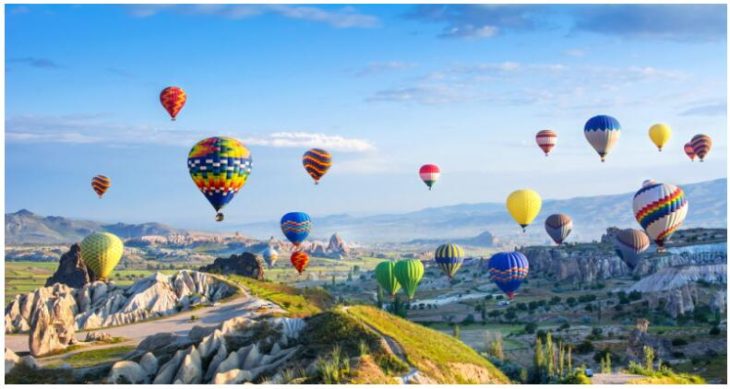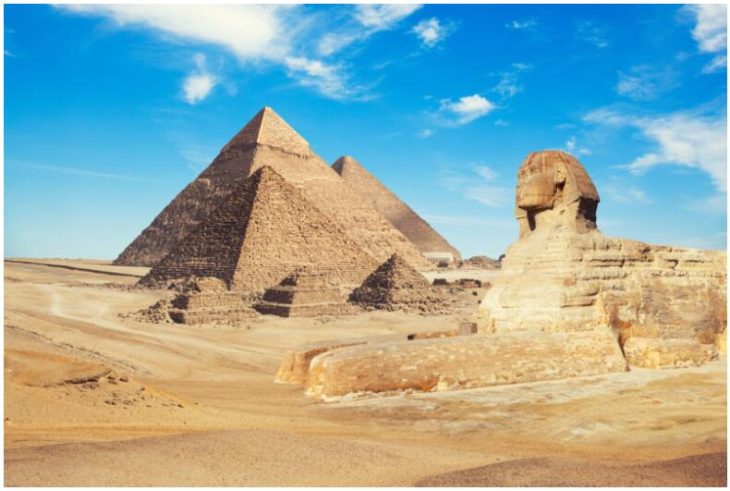
The Middle East has a mystical atmosphere around it. Many countries in this area are still relatively unknown to tourists, while most countries have a lot to offer. Read more about the ten largest countries in the Middle East and what they have to offer here.
10. United Arab Emirates: 82,880 km2
The United Arab Emirates consists of seven emirates and is best known as an oil state. The capital of this country is Abu Dhabi, but Dubai is probably more famous to most people. In the modern part of this city you will find many skyscrapers, where the Burj Kalifa with its height of 828 meters towers unreal high above you. Incidentally, the inhabitants of this country do not have any student debts or sky-high healthcare costs, because the government pays for that.
9. Jordan: 92,300 km2
Jordan is home to one of the Seven Wonders of the Modern World and is worth a visit for that alone. When you walk around the world wonder Petra, you quickly understand why this belongs in the list of wonders of the world. Through very narrow gorges you reach buildings and funerary temples of red sandstone that have been exceptionally well preserved. If you want the feeling of walking on the planet Mars, you have to be in the Wadi Rum desert. Because of the vast plains and mountains of red sandstone, several science fiction films were filmed here, such as Mission to Mars and The Martian.
8. Syria 185,180 km2
For many years Syria was an interesting tourist destination with historic cities such as Palmyra, Aleppo and Bosra. Unfortunately, many of these historic sites have been destroyed or damaged during the war that has been raging there since 2011. The capital Damascus is popularly called Sham and has about 2 million inhabitants. Until the First World War, the name Syria was used for the countries of Lebanon, Jordan, Israel, Palestine and present-day Syria together.
7. Oman 212,460 km2
Oman was occupied by the Portuguese from 1508 to 1659 and traces of this are still visible. In the capital Muscat, for example, you can still find old Portuguese houses and forts. Until the year 1970, Oman was a very isolated country, only after that did the then sultan start improving the accessibility of and in the country. From that moment on, the country was also open to tourists. The country has a lot to offer with its diversity of landscapes, historical sights and a beautiful 1700 kilometer long coastline.
6. Iraq 438,317 km2
Iraq is about 12 times the size of the Netherlands and was also known as Mesopotamia. The country is almost completely surrounded by other countries and has only a small stretch of coastline. It borders the Persian Gulf in the southeast for 58 kilometers. Two major rivers flow through Iraq from north to south: the Euphrates and the Tigris. These two rivers eventually converge into the Shatt al-Arab River. The population of Iraq has grown from 2 million to more than 41 million in 120 years. More than 8 million of them live in Baghdad, the capital and largest city of Iraq. Like many countries in the Middle East, oil and gas production in Iraq is an important source of income for the country.
5. Yemen 527,970 km2
In Arabic, the name Yemen means “country in the south”. As in many other Arab countries, you see a lot of Turkish influence in Yemen, because the country was part of the Ottoman Empire for a long time. For years, North Yemen and South Yemen were two separate countries. Although it had been the intention since 1972 to unite the north and south, it was not achieved until 1990. The largest city in the country is Sanaa, which is also the capital. The Arab Spring also caused protests in Yemen and in 2015 this resulted in a civil war.
4. Turkey 783,562 km2
The first city that people associate with Turkey is probably Istanbul, the largest city in Turkey with a lot of interesting mosques and other sights. In the past, Istanbul was also known as Constantinople: the capital of the Byzantine Empire and later of the Ottoman Empire. In addition to Istanbul, the coastal towns and nature reserves such as Cappadocia also bring many tourists to the country every year. Every day around sunrise, hundreds of hot air balloons take off in this mountain area, creating a special spectacle.
3. Egypt 1,010,407 km2
Egypt is the only country in this top 10 that is located in Africa and has more than 100 million inhabitants, of which about 20 million live in the capital Cairo. Furthermore, because of the fertile soil, most of the inhabitants live near the Nile. In Egypt you will find many pyramids and archaeological sites that give a lot of insight into the history of the country. In the east of Egypt lies the Red Sea, which attracts many diving and snorkeling enthusiasts.
2. Iran 1,648,195 km2
Iran is located in Western Asia and is bordered by water in both the north and the south. In the north on the Caspian Sea and in the south on the Persian Gulf and the Gulf of Oman. Iran was called Persia until 1935 and the official language is still called Persian. The capital Tehran has about 13 million inhabitants including suburbs. Iran has a wealth of cultural heritage, such as bazaars, hammams and mosques. Iran also has a great diversity of landscapes to offer: mountains, sand dunes and even salt flats.
1. Saudi Arabia 2,149,690 km2
Saudi Arabia is located in the Arabian Peninsula (the largest peninsula in the world). The country is the largest oil producer in the world and caused a huge economic change in the country. Although Saudi Arabia was not accessible to tourists until recently, that has changed in recent years. This country has a lot to offer, especially for travelers interested in history, special landscapes and Arab culture. An example of an interesting sight is the city of Hegra, this city is 2000 years old and consists of about 130 monumental tombs.




